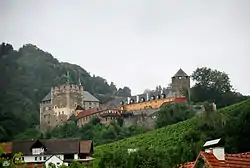Burg Sommeregg
Sommeregg is a medieval castle near Seeboden in the Austrian state of Carinthia, Austria. It is situated in the foothills of the Nock Mountains at an altitude of 749 m.[1] The fortress served as an administrative seat in the Upper Carinthian estates held by the Counts of Ortenburg and Celje; it later was the residence of the Graben and Khevenhüller dynasties; ministeriales of the Austrian House of Habsburg.
| Sommeregg Castle | |
|---|---|
| Carinthia, Austria | |
 | |
| Type | Hill castle |
| Site information | |
| Owner | Private |
| Open to the public | Yes |
| Site history | |
| Built | 12th century |
| Built by | Witemarus von Sommeregg |
| Battles/wars | Austrian–Hungarian War (1487) |
| Events | Ritterspiele (medieval reenactment) |
| Garrison information | |
| Past commanders | Andreas von Graben, Virgil von Graben |
History
The castle was probably erected in the 12th century, as one Witemarus de Sumereke was already mentioned in an 1187 deed issued at Neustift Abbey in Tyrol. The Lords of Sommeregg then served as ministeriales of Count Otto II of Ortenburg, who ruled over extended estates in Upper Carinthia, rivalling with the House of Gorizia and the Salzburg archbishops. On 29 May 1275 the marriage of Otto's granddaughter, Euphemia of Ortenburg-Hardegg, with Count Albert I of Gorizia was arranged here.
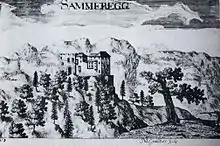
In the 14th century, the Lords of Sommeregg achieved the knightly status of Ortenburg burgraves and castellans with comprehensive administrative and military responsibilities in the lordship of the manor. When the Counts of Ortenburg became extinct in 1418, their possessions passed to the Counts of Celje in Carniola, who left the administration of the remote Upper Carinthian estates to local stadtholders. In 1442 the Styrian noble Andreas von Graben by marriage inherited the Sommeregg burgraviate. His rights were acknowledged by Count Frederick II of Celje and the castle became a residence of the House of Graben.
The dynasty maintained the title of Sommeregg burgraves, even when the last Celje count Ulrich II was murdered in 1456. After a long dispute with Count John II of Gorizia, the former Ortenburg possessions fell to the Habsburg emperor Frederick III, who confirmed the feudal rights of the Graben family. Andreas von Graben was succeeded by his son Virgil in 1463, however, in 1487 the castle was occupied and devastated by Hungarian forces under King Matthias Corvinus on his campaign against the Austrian Habsburgs. Afterwards Virgil von Graben had the fortress rebuilt in its current appearance.
Through Virgil's niece and heiress Rosina (d. 1534), Sommeregg passed to the Bavarian Lords of Rain. In 1550 it was purchased by the Carinthian noble Christoph Khevenhüller, whose descendants held the castle until 1628. The Sommeregg manor was dissolved upon the Revolution of 1848.
Lords of Sommeregg
| Time | Owner | Lord and Viscount of the Fief |
|---|---|---|
| 1187–1418 | Counts of Ortenburg | until 1338 Lords of Sommeregg, later the Families Von Treffen, Steierberger, Maltteiner, Von Katsch and Hallegger |
| 1418–1456 | Counts of Celje | Family Von Hallegg, since 1442 Lords Von Graben von Stein as Burggrafen (Viscounts) |
| 1456–1628 | House of Habsburg | Lords Von Graben (von Stein), since 1509 Georg and Rosina Goldacher, Haymeran von Rain zu Sommeregg and Rosina von Graben von Rain, since 1550 Christoph Khevenhüller von Aichelberg and his following |
| 1628–1651 | Landlord Count Hans Wittmann | |
| 1651–1932 | Counts / Family Von Lodron | |
| 1932–1940 | Josef Penker | |
| 1940–1969 | Josef Riebler / Daughter Helene as Baroness Rosenberg de la Marre | |
| 1969–1992 | Family Elfi / Andreas Egger | |
| 1992- | Family Riegler | |
See also
References
This article was initially translated from the German Wikipedia.
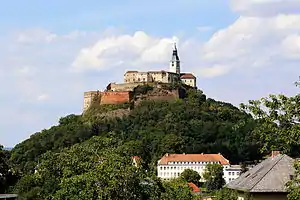
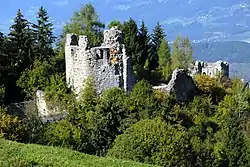
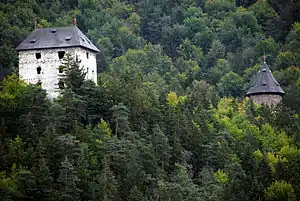
.JPG.webp)
